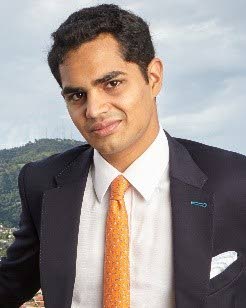Singapore’s health success closer than we think

KIRAN MATHUR MOHAMMED kmmpub@gmail.com
Scrolling through my phone this morning, I noticed a headline: “Ambulance arrived within 'normal time.'” The article had more context, but no doubt most people’s instinct was to think, “Wow, is that so rare that it is newsworthy?”
They would not be far off. TT ranked 95th of out 195 countries in the first comprehensive ranking of healthcare access and quality created last year by the Bill and Melinda Gates Foundation.
This measures the extent to which people die of causes that are treatable by decent quality healthcare, also called “amenable mortality” which sounds like the title for a comic murder mystery.
Crime may weigh on our minds, but thousands more are being robbed by otherwise preventable deaths. Grief and the whiff of stained sheets haunt the memories of every family.
Yet there is reason to be hopeful. Thanks largely to committed public servants like chief medical officers Dr Rohit Doon and Dr Roshan Parasram, TT has boosted its score from 55.7 in 2000 to 64.3 in 2016. Iceland, the top-ranking country in the Gates paper, has a score of 97.1.
So what can we do to continue our forward momentum and ensure healthcare reaches those that desperately need it?
More money alone is not the answer. The government has precious little of the stuff.
Enter Singapore. It has become a cliché in development circles. That is because it works. Ezra Klein at Vox has run an in-depth investigation of the Singaporean healthcare system.
First off, Singapore taxes workers between seven and 9.5 per cent of their pay. This money is placed in a Medisave account for each worker. It can only be used for healthcare expenses under certain conditions. This funds most routine primary care.
Often though, healthcare expenses run far higher, particularly if someone has a sudden illness like, say, a heart attack. To cover that, they pay a monthly premium set by age for state health insurance which pays expenses that exceed a deductible of roughly US$1,400. Everyone is automatically enrolled, but they can opt out of the system.
When people pay for their own care they shop around for the best and most cost-effective option. Insurance is there for when it is really needed. The market goes to work for good.
This works well for most people. But what about the poor who can’t afford insurance and save very little? Their safety net is a state investment fund (Medifund), endowed with a principal of US$3 billion that can’t be touched. The income from this fund is used to pay the medical bills of the poorest and most vulnerable.
In order to keep costs down, the government influences how this money can be used. For example, the government subsidises a list of drugs that it determines to be “cost-effective and essential.” And while you are free to buy any drugs you want, you can only use Medisave funds to buy drugs on that subsidised list.
As America’s example has shown, costs can spiral out of control in a purely private system. That is why the Singaporean government runs a network of public hospitals which patients (or their insurers) pay for. They compete with private hospitals, but each hospital has different classes of wards.
For example, “C” wards are set up in dormitories with common bathrooms and without airconditioning. Costs here are heavily subsidised by the State. In contrast, “A” wards are unsubsidised but patients enjoy private rooms and bathrooms, and airconditioning. No matter which ward you are in, the quality of care is the same across the board.
These subsidised public hospitals and drugs act as a lid on private-sector costs while also introducing competition and encouraging efficiency in the public system.
Of course, TT is no Singapore. Keeping healthcare costs down is much easier in a rich country that has virtually no drug and gun crime, and stratospheric alcohol and cigarette taxes. Only 15 per cent of the population drive cars, and consequently crash them less frequently.
Yet visionary doctors like Prof Surujpal Teelucksingh, who has changed how obesity and diabetes are treated worldwide, have shown that TT has the potential for great leaps. Within the molasses of the system there are brilliant doctors and committed staff.
The Singaporean model is closer to TT's than people may think. It has basically introduced competition and choice into what is still a state-run system. It is not so far removed from TT's current system that its best elements can't be adopted. Perhaps then mortality might be slightly less amenable to us.
Kiran Mathur Mohammed is a social entrepreneur, economist and businessman. He is a former banker, and a graduate of the University of Edinburgh.


Comments
"Singapore’s health success closer than we think"